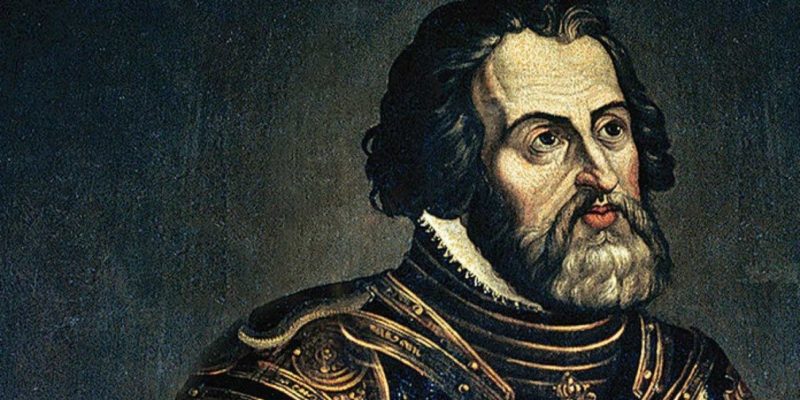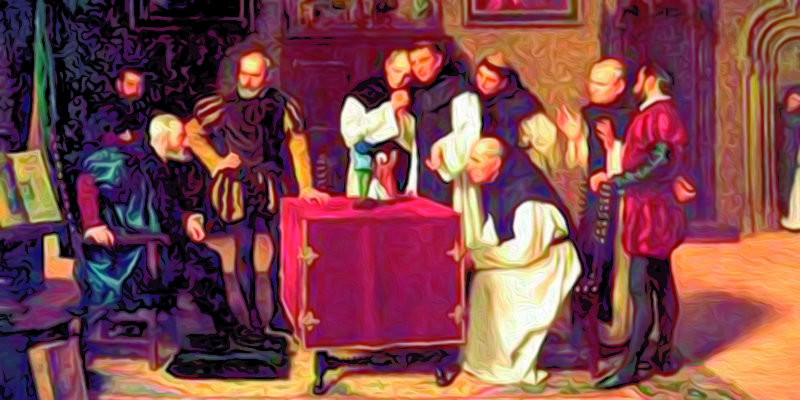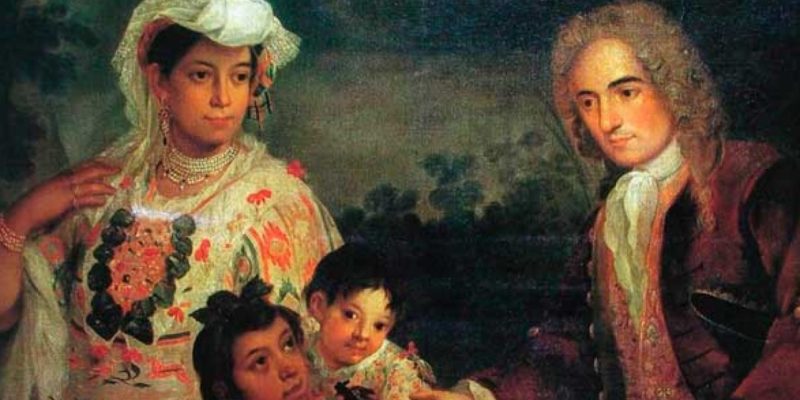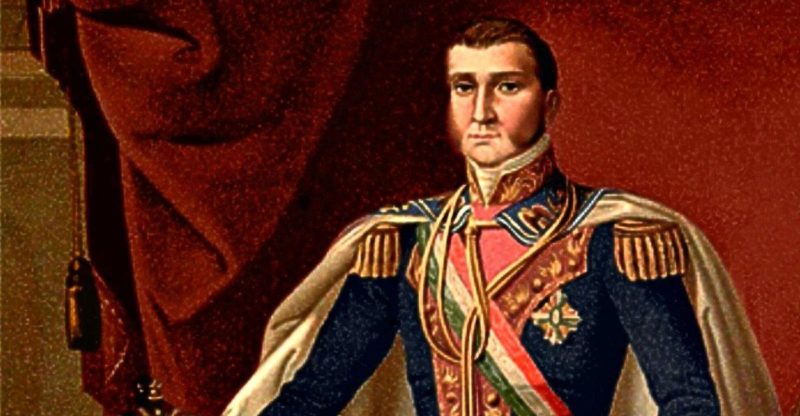We explain what the Viceroyalty of New Spain was, how it was founded and its viceroys. In addition, its general characteristics, economy and culture.
What was the Viceroyalty of New Spain?
The Viceroyalty of New Spain was one of the four viceroyalty divisions in which the American colony of the Spanish Catholic Empire was organized , along with the Viceroyalty of New Granada, the Viceroyalty of Peru, and the later Viceroyalty of Río de la Plata.
The Viceroyalty lasted until the 19th century , when the first and definitive social movements took place that led to the War of Independence that ended in 1821. Then the First Mexican Empire was erected in its place.
History of the Viceroyalty of New Spain

The war of conquest ended in the 16th century, and the territory of the fallen Aztec Empire was initially ruled by the conquistador Hernán Cortés . It was he who proposed to Emperor Charles V the name "New Spain of the Ocean Sea", since the fertility and climate of those new lands reminded him of the peninsula.
Under the command of Cortés , the subjugated indigenous population was organized to start the agricultural, mining and coastal exploitation of the American lands, at the same time that the evangelization campaigns of the Franciscans, Dominicans and Augustinians began. The war against the remaining resistant tribes lasted until the beginning of the 17th century, when they were almost exterminated.
Foundation of the Viceroyalty of New Spain
The Viceroyalty of New Spain was founded on March 8, 1535 , under the command of Antonio Mendoza y Pacheco, a Spanish politician and soldier, knight of Santiago and first commander of Socuéllamos. His command lasted until 1550, when he became the Viceroyalty of Peru between 1551 and 1552.
Territorial expansion

The territory of the Viceroyalty was gigantic. It encompassed the entire present-day territory of Mexico and the present-day US territories of California, Nevada, Colorado, Utah, New Mexico, Arizona, Texas, Oregon, Washington, Florida, parts of Idaho, Montana, Wyoming, Kansas, Oklahoma, and Louisiana; in addition to the southwestern region of British Columbia, present-day Canada.
Added to that are the territories of the current countries of Guatemala , Belize, Costa Rica, El Salvador, Honduras and Nicaragua , which formed the Captaincy General of Guatemala.
Also, those from Cuba, the Dominican Republic, Puerto Rico, Trinidad and Tobago , and Guadeloupe, who formed the Captaincy General of Cuba. And finally, the territories of the Philippines, Carolinas and Marianas in Asia and Oceania, which made up the Captaincy General of the Philippines.
Viceroys
New Spain had more than 62 viceroys, of which the following stand out:
- Antonio de Mendoza y Pacheco, first viceroy, between 1535 and 1550.
- Luis de Velasco, successor of Mendoza and Pacheco, ruled between 1550 and 1568.
- Martín Enríquez de Almansa, Velasco's successor, ruled between 1568 and 1580.
- Antonio María de Bucarelli y Ursúa, Viceroy between 1771 and 1779.
- Vicente Güemes Pacheco, the only viceroy born in America, ruled between 1789 and 1794.
- Juan O'Donojú, the last viceroy of New Spain, did not really hold office, appointed and deposed in 1821.
Viceroyalty regime

The political organization of the Viceroyalty was made up of various kingdoms, general captaincies and manors , hierarchically organized under the command of the viceroy, who in turn obeyed the peninsular authorities of the crown, in the Royal Council of the Indies.
In addition to the viceroy, there were other secondary aldermen , since the Viceroyalty was divided into Kingdoms: New Spain, New Galicia, Guatemala, New Vizcaya, New Kingdom of León, New Mexico, New Extremadura and New Santander. In addition, there were the three General Captaincies already mentioned, each with a Governor and a Captain General.
Lastly, there were two lordships: the Marquesado del Valle de Oaxaca, granted to Cortés himself and his descendants, and the dukedom of Atlixco, granted in the 18th century to José Sarmiento de Valladares, former viceroy.
Viceroyalty Society

Society in colonial times was made up of well -defined racial strata , which clearly distinguished between white Europeans and indigenous Creoles who survived the conquest and their descendants, and black slaves brought from Africa , incorporated from early years to supply the aborigines in the work physical properties of mining, since they were much more resistant.
In addition, the indigenous survivors of the conquest were decimated by the cruel treatment of the servants and by the diseases brought by the conquerors, unknown to them until then.
However, throughout the centuries that the colony lasted , an intense miscegenation took place that combined the three races into a series of castes, each of which had its own denomination:
- mongrels Mixture of Spanish and indigenous .
- Castizos. Mix of Spanish and mestizo.
- Mulatto. Mix of Spanish and black.
- Moorish. Mix of Spanish and mulatto.
- Albino. Mix of Spanish and Moorish.
Viceroyalty Economy
The economy of the viceroyalty was merely extractives since it exploited the natural resources (agricultural and mining) of the New World to send to the peninsula.The crown imposed on its colonies a model of commercial restrictions that guaranteed control and the greatest benefit of all the economic activity of its viceroyalties. In addition, he distributed the American lands to his emissaries, thus creating the first and largest colonial estates .
Despite the commercial monopoly , smuggling and piracy proliferated enormously in colonial territory and waters, especially linked to the British crown, the main enemy of the Spanish at that time.
Role of the Church
 After the conquest, an intense work of implantation of the Spanish language, religion and culture continued and in this the Catholic Church and its Inquisition played a central role.
After the conquest, an intense work of implantation of the Spanish language, religion and culture continued and in this the Catholic Church and its Inquisition played a central role.The implementation of Catholic moral codes , above all, was essential in the Viceroyalty of New Spain, since many of its aboriginal inhabitants came from theocratic cultures with deeply rooted practices such as polygamy, human sacrifice or polytheism.
The Virgin of Guadalupe was particularly significant in the evangelization of Mexico , serving as a hinge to integrate the mestizos and aborigines into the cult. Cases like this abounded in Latin America and were the beginning of a complex syncretism between the three mother cultures in coexistence.
Viceroyalty Culture
In the heart of the viceroyalty, the remains of the pre-Columbian cultures merged with the Spanish and, to a lesser extent, the African.This served as fuel for one of the American cultural centers of the Spanish Empire, which produced important names for Hispanic literature such as Sor Juana Inés de la Cruz and Juan Ruiz de Alarcón, or chemists such as Andrés Manuel del Río, discoverer of Vanadium.
War of independence
 The Viceroyalty of New Spain came to an end in the War of Independence, which, as in other American Spanish colonies, took advantage of the fall of the Spanish throne to the Napoleonic troops in 1808 to free itself from the economic and political restrictions imposed by colonial society.
The Viceroyalty of New Spain came to an end in the War of Independence, which, as in other American Spanish colonies, took advantage of the fall of the Spanish throne to the Napoleonic troops in 1808 to free itself from the economic and political restrictions imposed by colonial society.In 1810 the first independence proclamations were made and in 1821 freedom was achieved and an autonomous government was erected : the First Mexican Empire, ruled by Agustín de Iturbide.
The above content published at Collaborative Research Group is for informational and educational purposes only and has been developed by referring to reliable sources and recommendations from technology experts. We do not have any contact with official entities nor do we intend to replace the information that they emit.
Passionate about understanding and contributing to a world that does not stop changing. New forms of Work, Sustainability and Technology. For many years he has worked as a creative for large international companies. He has a Ph.D. in information technology and he has been doing quantitative research in the interdisciplinary areas of information systems, cyber security, data analytics and artificial intelligence. He continue to look for creative solutions through technology to help companies to be more humane and sustainable..
Leave a reply
Your email address will not be published. Required fields are marked *Recent post

Sport: What Is It, Types, Risks, Features, Characteristics and Examples

Dogs: Emergence, Features, Characteristics, Feeding and Breeds

Story: Definition, Elements, Structure, Features and Characteristics

